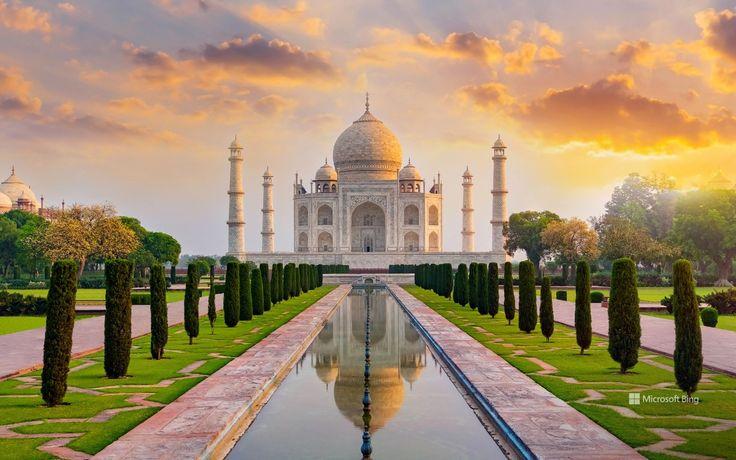Taj Mahal Agra: History, Beauty & Travel Tips

The Taj Mahal in Agra is often described as one of the most beautiful monuments in the world. It is not just a building made of marble; it is a symbol of love, history, and cultural brilliance. Every year, millions of people from around the world travel to India to witness the monument’s stunning architecture and serene ambiance. The Taj Mahal combines artistic creativity, craftsmanship, and engineering marvels of the Mughal era. From its perfect symmetry to the intricate carvings and gardens, every element tells a story of passion, devotion, and artistic mastery. Visitors often find themselves mesmerized by the monument’s reflective pools, delicate inlay work, and the soft glow of the white marble during sunrise and sunset. This iconic site is more than a tourist attraction-it is a testament to India’s rich history, cultural diversity, and timeless beauty.
Exploring the Taj Mahal offers not just a visual delight but also a deeper understanding of India’s architectural legacy and historical context. It stands as a bridge between the past and present, allowing travelers to connect with stories of love, power, and devotion that shaped an era. Whether you are an art lover, history enthusiast, or casual traveler, a visit to the Taj Mahal promises an experience that stays in memory forever.
History of the Taj Mahal
The Taj Mahal was commissioned by Emperor Shah Jahan in 1632 in memory of his beloved wife Mumtaz Mahal, who passed away during childbirth. Built over 22 years by thousands of artisans, it reflects the grandeur and sophistication of Mughal architecture. The monument combines elements from Persian, Islamic, and Indian architectural styles, making it a unique masterpiece.
One of the most remarkable aspects of the Taj Mahal is its marble craftsmanship and symmetry. The white marble reflects light differently at different times of the day, creating an ever-changing visual experience. The monument is adorned with calligraphy, floral designs, and semi-precious stones that highlight the meticulous attention to detail of the artisans. The surrounding gardens, known as Charbagh, represent the Islamic concept of paradise, creating a serene and balanced environment.
In 1983, the Taj Mahal was declared a UNESCO World Heritage Site, recognizing its global significance and outstanding universal value. Historians and tourists alike marvel at the historical and cultural narratives embedded within its walls, making it a must-visit destination for anyone exploring India’s rich heritage.
India Tour Packages: Making the Visit Easier
When planning a visit to the Taj Mahal, many travelers choose India tour packages to make their journey smoother and more enjoyable. These packages typically include transportation, guided tours, accommodation, and additional sightseeing opportunities in Agra and nearby cities. By opting for a tour package, travelers can avoid common challenges such as long queues, language barriers, and navigation issues.
For example, a well-organized tour package might combine a visit to the Taj Mahal with nearby attractions such as Agra Fort, Fatehpur Sikri, and local markets. This allows travelers to experience the historical richness of Agra while enjoying a hassle-free itinerary. Professional guides often provide insightful commentary on the history, architecture, and legends surrounding the Taj Mahal, making the visit both educational and memorable.
Travelers who plan their trips with India tour packages can focus entirely on enjoying the experience, capturing photographs, and learning about the cultural significance of each site without worrying about logistics.
Architectural Beauty of the Taj Mahal
The Taj Mahal is not just a symbol of love; it is also an architectural wonder. The monument’s perfect symmetry, intricate carvings, and carefully designed gardens make it a masterpiece of Mughal art. The main dome, which rises to a height of 73 meters, is flanked by four smaller domes and four minarets, creating a harmonious visual effect.
Inside, the cenotaphs of Shah Jahan and Mumtaz Mahal are surrounded by delicate marble screens and floral patterns. The use of semi-precious stones in the inlay work reflects exceptional craftsmanship and attention to detail. Each element, from the gates to the fountains, is designed to evoke a sense of balance, serenity, and grandeur. The reflective pools in the gardens further enhance the monument’s beauty by mirroring its iconic silhouette.
The Taj Mahal is also celebrated for its ability to blend with nature. The lush gardens, flowing water channels, and surrounding Yamuna River create a tranquil environment, offering visitors a peaceful retreat from the bustling city of Agra.
Places to Visit in India Alongside the Taj Mahal
While the Taj Mahal is a major highlight, there are numerous other places to visit in India that offer unique experiences. Agra itself is home to the impressive Agra Fort, a UNESCO World Heritage Site, which showcases the military and architectural prowess of the Mughal Empire. Nearby Fatehpur Sikri, a deserted city built by Emperor Akbar, provides insight into Mughal urban planning and architectural innovation.
Beyond Agra, travelers often explore Jaipur, known as the Pink City, which is famous for its forts, palaces, and cultural heritage. Delhi, India’s capital, offers a mix of modernity and history, including landmarks like India Gate, Qutub Minar, and Humayun’s Tomb. By planning a comprehensive itinerary, tourists can experience the rich tapestry of India’s history, art, and culture, making their journey even more enriching.
Including these destinations alongside the Taj Mahal ensures that travelers get a well-rounded understanding of India’s heritage, architecture, and local traditions.
Travel Tips for Visiting the Taj Mahal
To make the most of your visit to the Taj Mahal, consider the following travel tips:
-
Best Time to Visit: October to March, when the weather is pleasant.
-
Timing: Visit early morning to avoid crowds and capture stunning photographs.
-
Tickets: Purchase online in advance to skip long queues.
-
Guides: Hire professional guides for historical context and storytelling.
-
Photography: Use a tripod for sunrise or sunset shots; drones are not allowed.
-
Local Cuisine: Try nearby eateries for authentic Mughlai dishes.
Practical preparation ensures that visitors can enjoy the monument fully while respecting its cultural and historical significance.
Conclusion
The Taj Mahal is more than just a marble monument; it is a celebration of love, art, and history. From its remarkable architecture to its serene gardens and historical context, it offers an unforgettable experience for travelers from around the world. Planning your visit with the help of India tour packages or exploring additional places to visit in India ensures that your journey is enriching, smooth, and memorable. Whether you are a history enthusiast, an art lover, or a curious traveler, the Taj Mahal remains an iconic symbol of India’s heritage that captivates the heart and imagination.
FAQ
Q1: When was the Taj Mahal built?
A: The Taj Mahal was commissioned in 1632 and completed in 1653 by Emperor Shah Jahan in memory of his wife Mumtaz Mahal.
Q2: What is the best time to visit the Taj Mahal?
A: The best time to visit is from October to March when the weather is cool and pleasant.
Q3: Are there other attractions near the Taj Mahal?
A: Yes, visitors can explore Agra Fort, Fatehpur Sikri, and local markets nearby.
Q4: Can I take guided tours at the Taj Mahal?
A: Yes, professional guides are available to provide historical insights and architectural explanations.
Q5: How can I buy tickets for the Taj Mahal?
A: Tickets can be purchased online in advance or at the entrance. Online tickets help avoid long queues.








